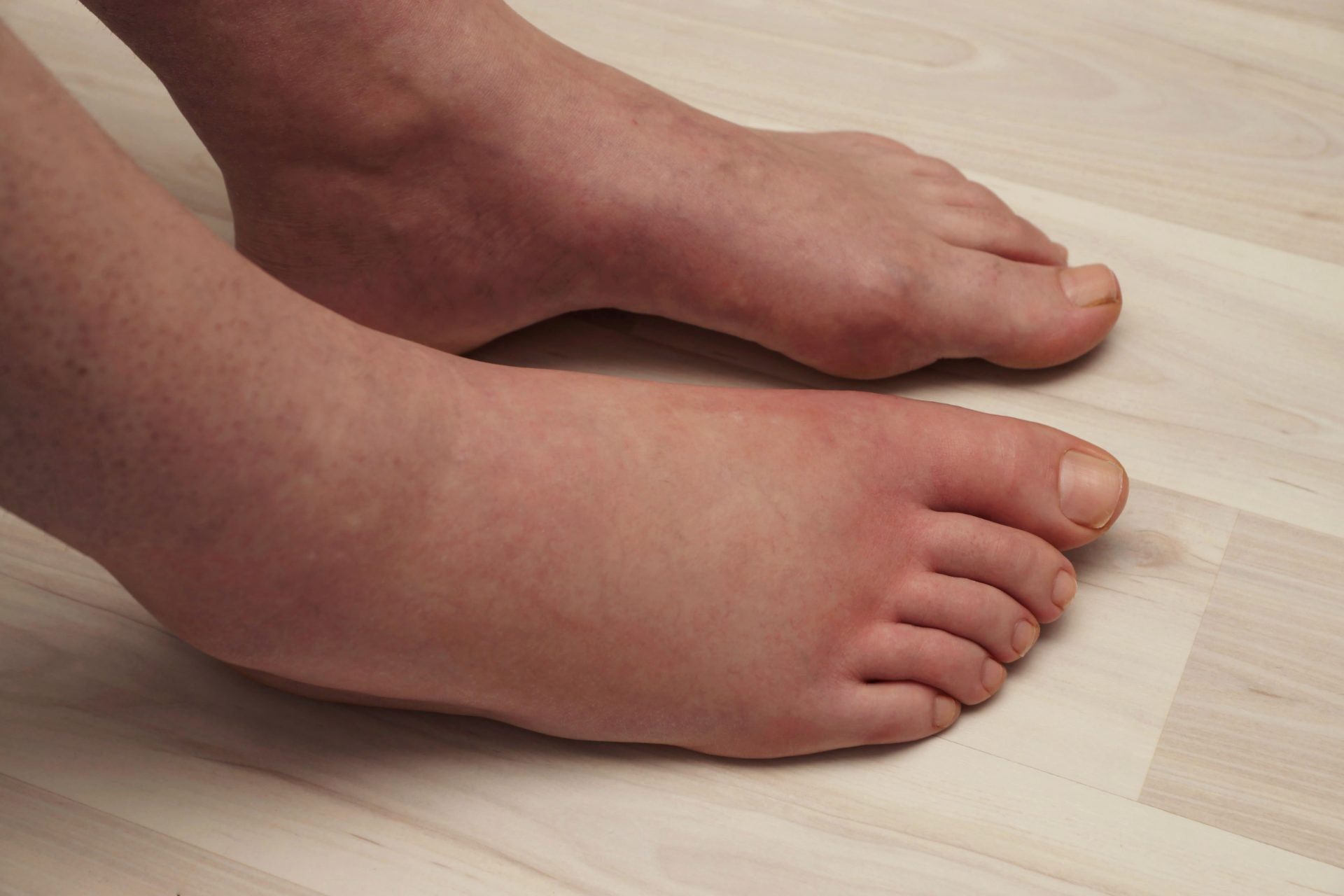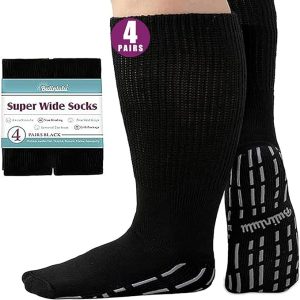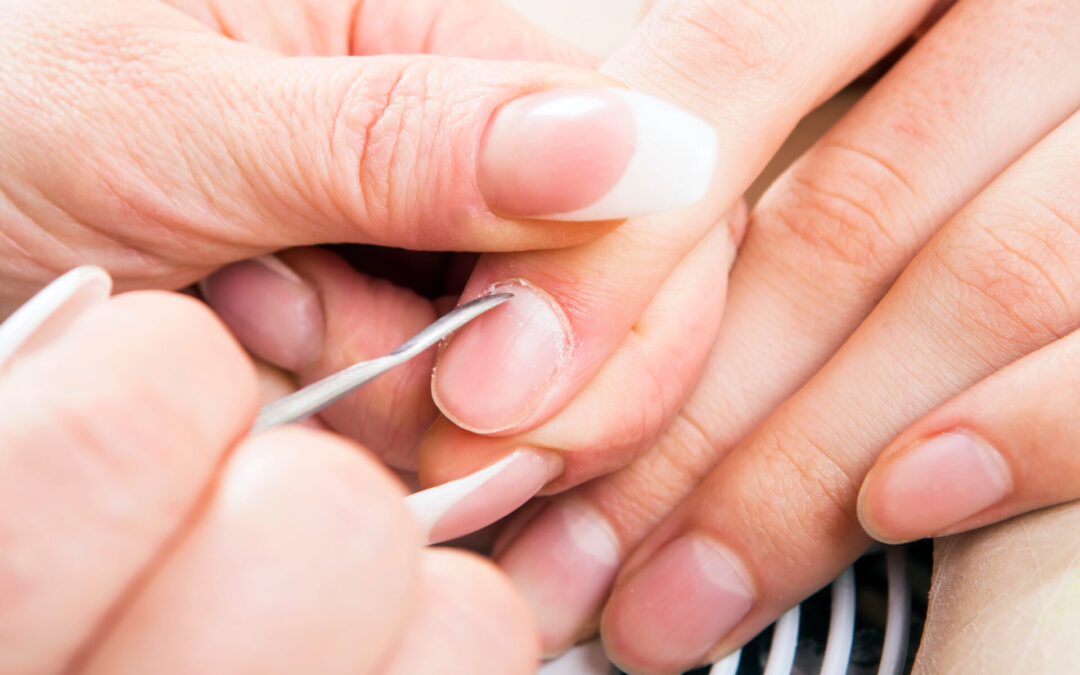Diabetic swollen feet, also known as diabetic edema, is a common complication of diabetes that can cause discomfort and pain. Learning what causes swollen feet in diabetes and how to manage it properly is key for relief.
We’ll provide an overview of diabetic swollen feet, including its causes, symptoms, treatments, and prevention methods. With the right information and care, those with diabetes can effectively minimize foot swelling and keep their feet healthy.
The Correlation Between Diabetes and Swollen Foot Issues
There is a strong connection between diabetes and swollen foot problems. Edema or fluid retention in the feet is common in those with diabetes for a few key reasons, including the following:
- High blood sugar levels can damage blood vessels and nerves, which control blood flow in the extremities, like the feet. This nerve damage (diabetic neuropathy) and blood vessel issues impair circulation.
- Excess sugar in the blood also makes fluids “stickier,” thickening the blood and making it more difficult for blood and fluids to circulate properly. This increases pressure in blood vessels and leads to puffy feet diabetes.
- Damaged blood vessels cause leakage of plasma and fluids into surrounding tissues like those in the foot, leading to swelling from inflammation and fluid buildup.
- Kidney damage (diabetic nephropathy) from high blood sugar also prevents proper filtering of fluids, causing retention and swelling.
So, in summary, the high blood sugar levels of uncontrolled diabetes contribute to foot swelling in multiple ways via damaged blood vessels, nerves, kidneys, and thicker bodily fluids. Keeping blood sugar in check is key to reducing risk.
Causes of Swollen Foot Diabetes
There are a number of potential causes and contributing factors for swollen foot diabetes.
- Diabetic neuropathy – Nerve damage in the feet disrupts proper blood circulation and fluid drainage, leading to swelling.
- Blood vessel damage – Damaged blood vessels leak fluid into foot tissues and don’t circulate blood and fluid properly.
- Kidney damage (diabetic nephropathy) – The kidneys have a harder time filtering fluid, which leads to retention.
- Heart problems – Issues like high blood pressure strain blood vessels, making swelling more likely.
- Thicker blood – Excess glucose makes the blood thicker and harder to circulate.
- Infection – Bacterial or fungal foot infections can cause inflammation.
- Excess sodium – Too much salt and sodium in the diet causes the body to retain more fluid.
- Sitting too much – Remaining sedentary and inactive slows blood circulation in the lower extremities.
- Medications – Some drugs like corticosteroids or hypertension meds can increase fluid retention.
- Obesity – Excess weight puts more pressure on blood vessels, which can lead to swelling.
Symptoms that Inflamed Feet Diabetes May Cause
Here are some common signs and symptoms of diabetic swollen feet:
- Visible swelling in feet for diabetics — sometimes, the swelling may leave an indentation when pressed
- Tight, stretched, or shiny skin around the swollen area
- Feet feel stiff, puffy, or sore when walking
- Tingling, numbness, or burning sensation in feet
- Redness and warmth to touch
- Difficulty moving foot joints and toes
- Indentations from socks, shoes, or objects left on swollen skin
- Increased pain when pressure is applied to the swollen area
- Foot pain or cramping after activity or end of the day
How to Treat Diabetic Swollen Feet
If you notice swelling in the feet along with diabetes symptoms, there are a number of ways to help manage it.
- Keep blood sugar controlled through medication, diet, and exercise. This minimizes vascular damage and thick blood.
- Follow a low-sodium diet to avoid fluid retention from excess salt.
- Take medication for diabetes, blood pressure, or swelling as prescribed for inflamed feet diabetes.
- Exercise regularly to improve circulation in the feet and lower legs.
- Avoid standing or sitting for too long — take breaks and prop up your feet when resting.
- Wear wide, well-fitted shoes and socks to avoid compression.
- Keep feet uncovered when possible to improve air circulation and drainage.
- Elevate feet above heart level when sitting or sleeping.
- Stretch and massage feet and toes gently to stimulate circulation.
- Use compression stockings or socks to improve blood flow in the legs and feet.
Seeing a podiatrist can also help determine causes and create a treatment plan for swollen diabetic feet. This may involve wound care, foot soaks, custom shoes, and surgery in some cases. Notify your doctor promptly about any extreme swelling. Managing blood sugar and early intervention are key.
Top 5 Best Products to Help Relieve Diabetic Swollen Feet (in no particular order):
1. SwellNoMore Pill
2. FitVille Diabetic Shoes
3. HerbaMe Blood Circulation Supplement
4. Circufiber Diabetic Socks
5. Bulinlulu Extra Width Socks
The Swelling in Feet for Diabetics Could Also be Due to:
- Improper Footwear – Shoes that are too tight or rub certain areas can cause irritation and inflammation. Wear properly fitted, comfortable shoes.
- Injury or Trauma – Direct blows or injuries to feet and ankles cause localized swelling from inflammation. Avoid injury through careful foot care.
- Sunburn – Sunburned feet lead to fluid leakage into skin tissues. Wear sun protection outdoors.
- Obesity – Excess Body weight can put additional pressure on the lower extremities
- Heart Failure – A weakened heart may struggle to pump blood effectively, leading to fluid retention in the legs and ankles.
- Kidney Disease – When the kidneys are not functioning correctly, excess fluid and waste can build up in the body, causing swelling in various areas, including the feet.
- Liver Disease – Liver conditions can lead to low levels of albumin, a protein that helps maintain the balance of fluids in the body. This can result in edema in the legs and abdomen.
Ankle Swelling and Diabetes
In people with diabetes, ankle swelling often occurs concurrently with swollen feet due to similar factors involved, such as poor circulation, blood vessel leakage, nerve issues, and fluid retention.
Ankle swelling related to diabetes may do the following:
- Affect one or both ankles
- Cause ankles to appear puffy and inflamed
- Make ankles tender to the touch
- Create a dimpled look when pressing on the tissue
- Cause stiffness, pain, or burning sensations
- Be accompanied by skin redness or warmth
Controlling blood sugar, staying active, using compression socks, elevating your feet, medication, and seeing a doctor can help reduce diabetic ankle swelling. Seek emergency care if swelling is severe, comes on suddenly, or is accompanied by other diabetes symptoms like dizziness or shortness of breath.
Swollen Toes
Swollen toes are another common manifestation of diabetic edema affecting the lower extremities. Due to diabetes-related nerve damage and circulatory issues, fluid can leak into the tissue and cause visible inflammation.
Signs may include the following:
- Puffy, enlarged toes
- Stiffness, soreness, or numbness in toes
- Red, inflamed toe skin
- Difficulty moving toes — loss of flexibility
- Toes that feel hot to the touch
- Indentations left on toes after removing socks or shoes
Proper foot hygiene, exercise, well-fitted footwear, staying off feet when possible, and keeping blood sugar controlled can all help prevent toe swelling. See a doctor if swelling is severe or accompanied by new skin lesions, sores, or ulcerations on the toes, which require urgent medical care.
How to Prevent Your Feet from Swelling
Here are some key ways people with diabetes can help prevent or minimize problematic foot swelling:
- Careful Monitoring of Blood Sugar – Keeping blood glucose levels in check through diet, medication, and testing helps minimize swelling risk.
- Daily Foot Inspections – Check feet daily for any cuts, bruises, or early signs of swelling to get prompt treatment.
- Leg Elevation – Prop up legs periodically during the day to improve drainage and reduce swelling.
Promptly seeking medical care for any persistent swelling, pain, numbness, sores, or changes in feet can also prevent complications. Keeping diabetes under control and careful foot care makes all the difference.
Zoppler is reader supported and may earn affiliate commissions from links on this page. We support and believe in all the products and services we promote and are affiliated with.
















